On March 19, 1941, the War Department ordered the creation of the the 99th Pursuit Squadron, better known as the Tuskegee Airmen.
The Tuskegee Normal School (later Tuskegee Institute) was founded on July 4, 1881. Its founders were Lewis Adams, a former slave, and George W. Campbell, a former slaveholder, who both believed African American education was of the utmost importance. They selected 25-year-old Booker T. Washington to serve as their first president. Under Washington’s leadership, the school went from using a rundown church to an institute spanning 2,300 acres by the early 20th century.
In 1940, there were only 124 African-American pilots in the U.S. Many had participated in the Civilian Pilot Training Program through the Tuskegee Institute, taught by Charles Alfred “Chief” Anderson. But none of them were allowed to fly for the military. The War Department didn’t want to accept African American pilots, so it set a high bar of flight experience and education that it didn’t expect any could meet. But they were wrong, and the U.S. Army Air Corps received a large number of applications from African American men who met their strict requirements.
Ultimately the War Department changed their mind and, on March 19, 1941, ordered the creation of America’s first black military pilot squadron. A few days later, the 99th Flying Squadron was established. The first graduates never saw combat, but as the war progressed later trainees served as escorts for heavy bombers and on bombing raids. In June 1941, they became the 99th Fighter Squadron, complete with ground crew.
By 1942, over 3,000 personnel were training at Tuskegee under the command of Captain Benjamin O. Davis, Jr. In April 1943, the squadron shipped out for its first assignment in North Africa. The 99th received a Distinguished Unit Citation for their part in the assault.
The next year, there were enough graduates to form the all-black 332nd Fighter Group, made up of four squadrons. They escorted bombing raids and dive-bombed and strafed enemy targets.
By the end of the war, 992 pilots had trained at Tuskegee. Of those, 355 were deployed overseas and 84 lost their lives. These men flew 1,578 combat missions, 179 bomber escort missions, and destroyed over 1,300 enemy aircraft, rail cars, trucks, and other vehicles. They were awarded several Silver Stars, 150 Flying Crosses, 14 Bronze Stars, and 744 Air Medals.
The Tuskegee Airmen proved to be some of the best pilots in the U.S. Army Air Corps. After the war, segregation ended in the military and many joined the newly formed Air Force. In 2007, the group was awarded a Congressional Gold Medal for the part they played in the war and overcoming prejudice.
Discover what else happened on This Day in History.

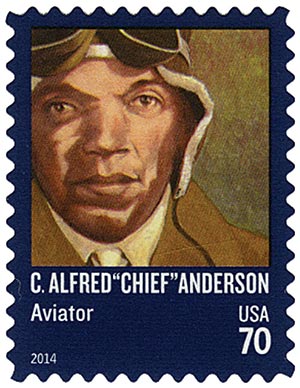
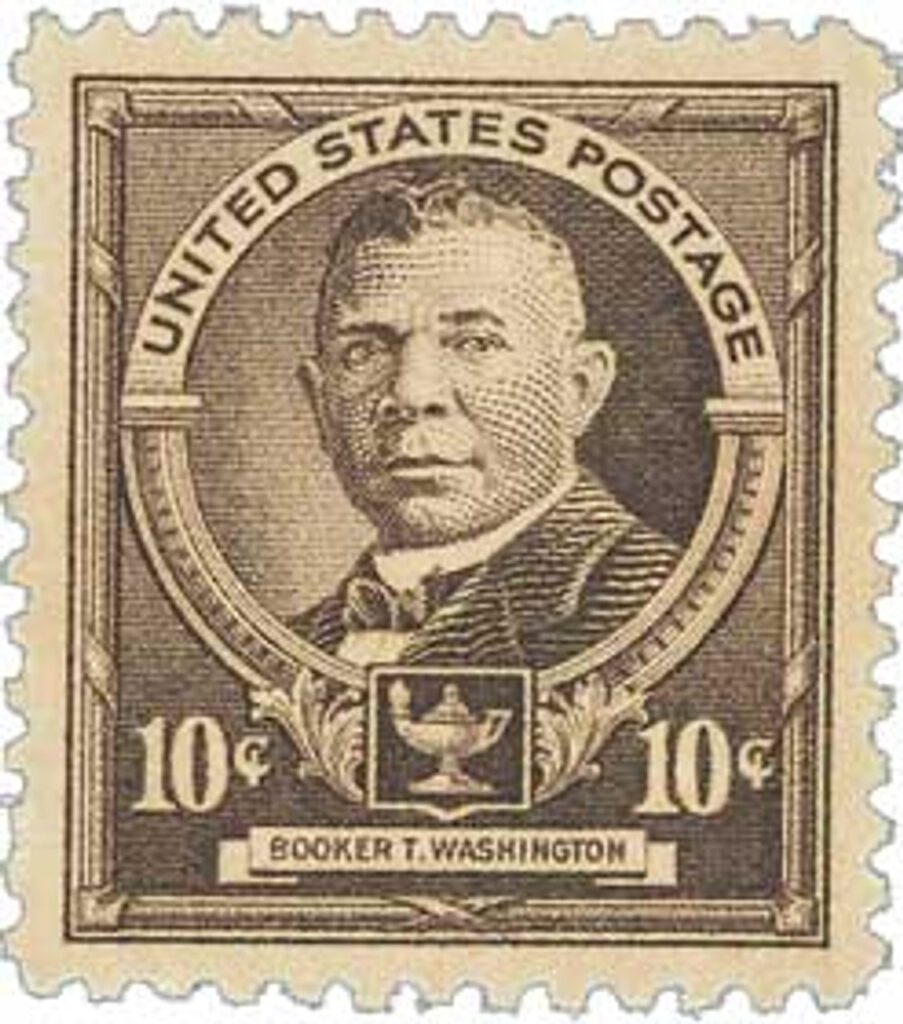
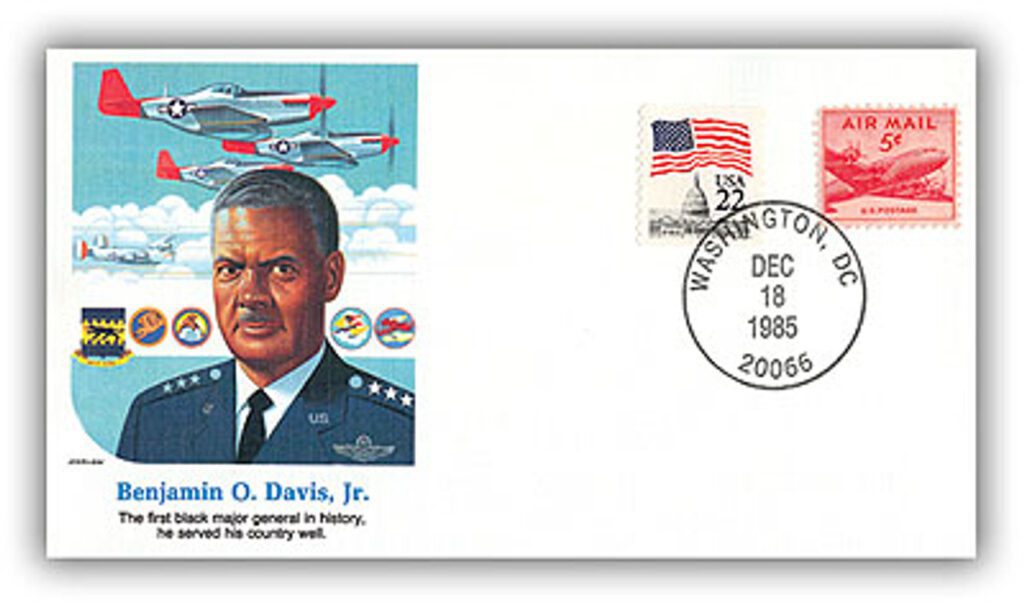
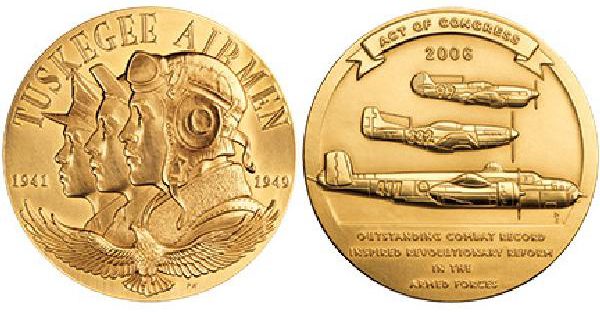
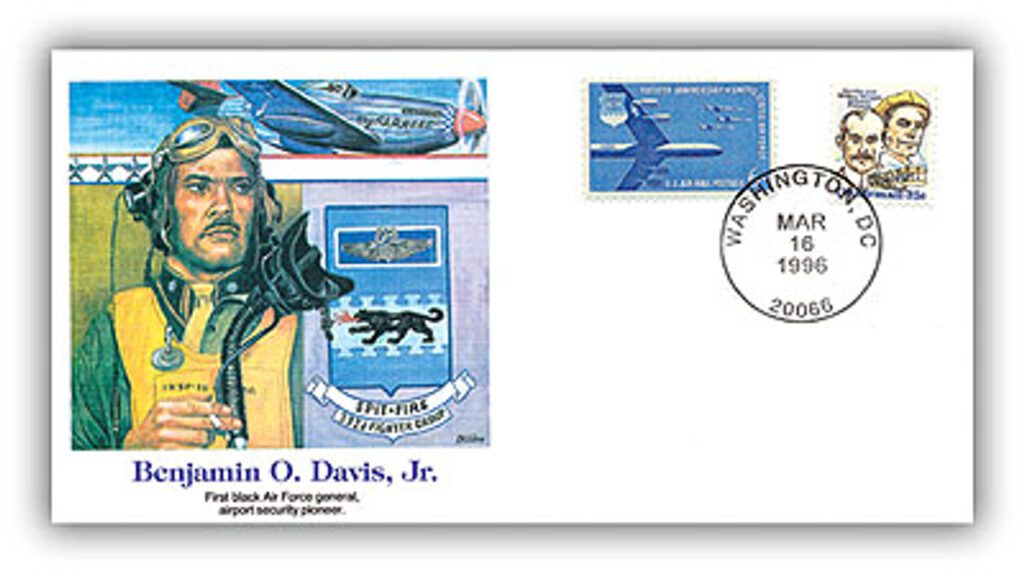
Great! More please about events that seldom gets recounted in mainstream media, schools, etc. Just the right stuff to enlighten the public’s sense of history, one of philately’s best features. Thanks. GdR
The “Red Tails”, as they were referred to by the Bomber crews, were a desired escort on those long missions into Germany. Those “Red Tails” are honored today by the Commemorative Air Force who still fly that Red Tailed P-51 at airshows around the country. Gen. “Chappy” James is a Vietnam version of those unique flying men.
The movie is a must see and according to the ending notes the 332nd never lost an escorted bomber.
Simply great historical news. Keep it up.
Always interesting and informative. People need to understand our history ,so the same mistakes don’t repeat themselves.
Great piece on a well deserved Group of Patriots!!!
About time these brave and skilled heroes were given ample recognition in our country. Thanks Mystic for not blowing this opportunity.
Great simple story about some very courageous men. My uncle flew b-24 liberators
and refused to fly unless the 332nd was escorting them. He never lost a friend with those guys around. They were crack pilots.
Thanks Mystic and great stamps.
Great article, Mystic. Thank you gentlemen for your service to our country.
Another good artu
Good stuff.
I applaud and appreciate the great service provided by the Tuskegee Airmen and the 99th Flying Squadron. Thank you for this nice tribute to the Tuskegee Airmen. Best Regards Dr. Doug
It is unfortunate that it took so long for our country to recognize these brave patriots.
Had it nor been for these men who proven that inspire the obstacles, we can still excell. Hooray for these men who showed how to overcome adversity!!
I knew a little about the Tuskegee Airmen and the 99th Flying Squadron but this essay solidly proves the high value of their recognition. Thank you so much, Mystic, for this GREAT update about these Super-Grand American Patriots !!!
Thank you, Mystic for: “This Day In History” As some of our responders
comment: “Not everywhere can we find historical events as clear and
concise as you provide”